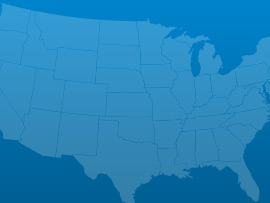Iowa’s 4,000 dams provide flood control, recreation, irrigation, and fire protection. The future of many dams is uncertain because of a lack of funding programs for dam owners and below average state budget for safety programs. Steps need to be made to create a funding program to assist dam owners with rehabilitation projects for the oldest of Iowa’s dams, increase the State of Iowa’s authority to require Emergency Action Plans (EAPs) for high hazard dams, and grow Iowa’s budget for dam safety programs. With only two staff available, only about 10% are able to be regularly inspected. Flood flows have been larger and more frequent in the last two decades, putting on more stresses than they were designed for and reducing the effectiveness of those specifically built for flood protection. Because of the potential for loss of life and property when a dam fails, each high risk installation should have an Emergency Action Plan in place, but only 23% of Iowa sites have one, well below the national average of 70%.
 Aviation
Aviation Bridges
Bridges Dams
Dams Drinking Water
Drinking Water Energy
Energy Inland Waterways
Inland Waterways Levees
Levees Rail
Rail Roads
Roads Solid Waste
Solid Waste Wastewater
WastewaterA: Exceptional, B: Good, C: Mediocre, D: Poor, F: Failing, ?: Incomplete
Each category was evaluated on the basis of capacity, condition, funding, future need, operation and maintenance, public safety, resilience, and innovation
Aviation
78 public-use airports
Bridges
5,043 of the 24,398 bridges are structurally deficient
Bridges
$56 million in bridge funds came from the Federal Highway Bridge Fund in 2011
Dams
91 high hazard dams
Dams
23% of the state regulated dams have an Emergency Action Plan
Drinking Water
$5.9 billion in drinking water infrastructure needs over the next 20 years
Energy
10.309 gigawatt-hours of renewable energy every year, ranking it 10th
Hazardous Waste
11 sites on the National Priorities List
Inland Waterways
490 miles of inland waterways, ranking it 19th nationally
Levees
889 miles of levees
Ports
10.3 million short tons of cargo in 2012, ranking it 35th nationally
Public Parks
$3.0 million of unmet needs for its parks system
Rail
15 freight railroads covering 3,897 miles across the state, ranking 11th nationally by mileage
Roads
$935 million a year in costs to motorists from driving on roads in need of repair, which is $422 /yr per motorist
Roads
10,560 of the state’s 114,438 public roads are major roads, and 12% are in poor condition
Schools
$4.7 billion in estimated school infrastructure funding needs
Transit
21.3 million annual unlinked passenger trips via transit systems including bus, transit, and commuter trains
Wastewater
$3.4 billion in wastewater infrastructure needs over the next 20 years

March 03, 2017
As the President’s repeated in his address to Congress his pledge to dramatically increase infrastructure spending to the tune of $1 trillion, various Congressional Committees

March 01, 2017
On Tuesday night, President Trump addressed a joint-session of Congress for the first time in his presidency. Infrastructure was among the many issues he discussed.

February 28, 2017
U.S. motorists set a new record for vehicle miles travelled (VMT) in 2016, driving over 3.2 trillion miles, an increase of 70 billion miles from

February 17, 2017
Romantic dates, the Grammy awards and celebrating black history are not the only milestones of this week; the Oroville dam crisis in California and the